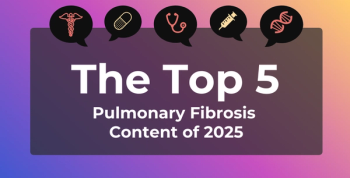
Assessing the Impact of the Orphan Drug Act 40 Years Later
The act was passed in 1983 and has contributed to increased research and development on treatments for rare diseases.
Around 5% of
This is according to a new comprehensive study published in
Using an internal FDA database, researchers assessed all orphan drug designations and approvals from 1983 to 2022.
More than 30 million Americans have a rare disease, and “the passage of the Orphan Drug Act (ODA) in the United States in 1983 represented a launching point for a rare disease drug development revolution for these patients,” the study authors wrote.
Developing drugs for rare diseases can be commercially risky, they noted. Prior to the law’s passage, only around 2 drugs per year had been approved by the FDA for rare diseases. However, the ODA provided financial incentives through the Orphan Drug Designation Program that helped accelerate development.
These incentives include a 25% tax credit on research and development costs, waived FDA user fees, and the potential for 7 years of marketing exclusivity for an approved orphan-designated indication. The legislation and scientific advances in the last 4 decades have led to the approval of hundreds of “orphan” drugs for use in the 7000 to 10,000 diseases and conditions that are considered rare, the researchers said.
In addition to assessing orphan drug approvals in the current study, the investigators also examined orphan drug designations as a proxy measurement of research activity. Data showed these results:
- 6340 orphan drug designations represent drug development for 1079 rare diseases, with 882 of those designations resulting in at least 1 FDA approval for use in 392 rare diseases
- 7 of the top 10 most designated and approved diseases were in rare cancers
- Median designations per disease: 2
- Maximum designations per disease: 185 (pancreatic cancer)
In addition, comparing the first (1983-1992) to the most recent decade (2013-2022), there were nearly 7 times as many designations and 6 times as many initial approvals in the most recent vs the first decade after the ODA was enacted. Following oncology, the most common therapeutic areas by orphan drug designations were neurology and infectious diseases.
Noncancer diseases with the most designations were amyotrophic lateral sclerosis, cystic fibrosis,
“Our results also suggest significant concentration in orphan drug designations and approvals: Only 5% (n = 54) of orphan-designated diseases account for nearly 50% of all orphan drug designations and 37% of initial orphan drug approvals,” the authors wrote.
The high number of single designation rare diseases suggests ongoing activity across a wide spectrum of previously overlooked conditions, they added. This finding “could be interpreted as a hopeful sign for patients diagnosed with these diseases.”
The use of orphan drug designations as a proxy for the entirety of rare disease drug development marks a limitation to the study. The included data also do not capture drugs that have been studied for a rare disease purely for academic purposes and not solely for commercialization.
“It seems unlikely that the ODA’s advocates in the early 1980s could have imagined the growth and scale of the rare disease drug development landscape and ecosystem in the present day,” the authors concluded. “Funding of basic and translational science for rare disease drug development should continue in order to bring therapies to the millions of affected patients who remain without treatment options.”
Reference
Fermaglich LJ and Miller KL. A comprehensive study of the rare diseases and conditions targeted by orphan drug designations and approvals over the forty years of the Orphan Drug Act. Orphanet J Rare Dis. Published online June 23, 2023. doi:10.1186/s13023-023-02790-7
Newsletter
Stay ahead of policy, cost, and value—subscribe to AJMC for expert insights at the intersection of clinical care and health economics.







































